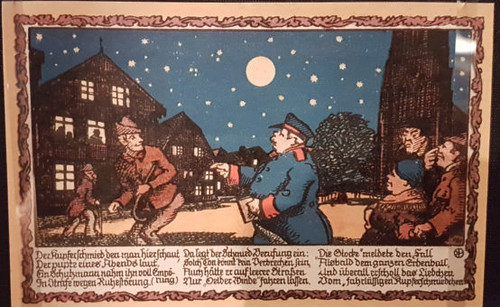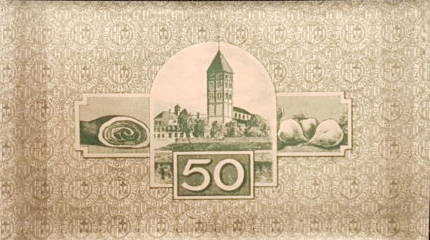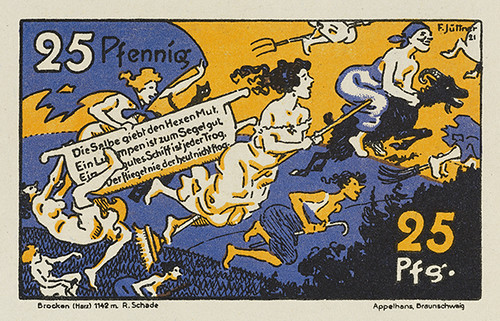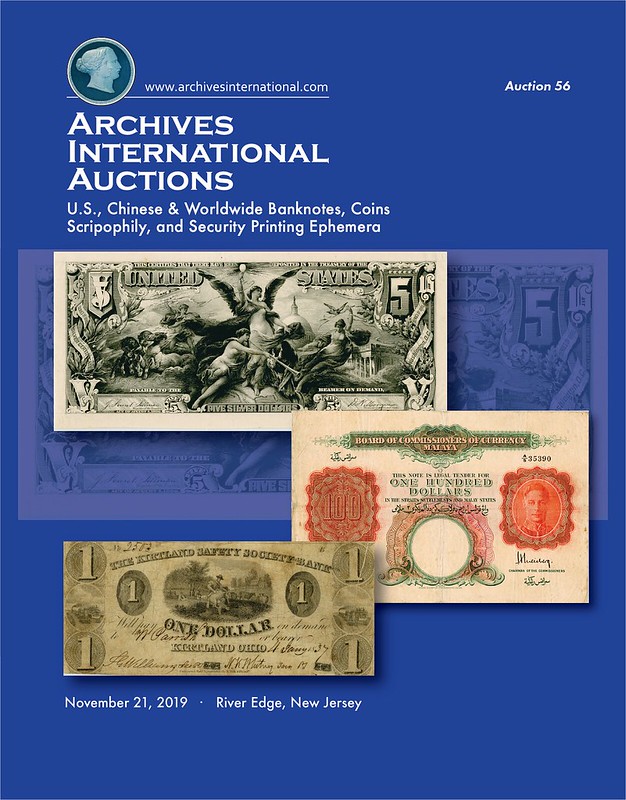
PREV ARTICLE
NEXT ARTICLE
FULL ISSUE
PREV FULL ISSUE
EXHIBIT: NOTGELD AT THE BRITISH MUSEUMHere's an excerpt of a review of the current exhibit of German notgeld at the British Museum. Found via the November 5, 2019 (Volume V, Number 20) issue of News & Notes from the Society of Paper Money Collectors. -Editor In the British Museum at the moment is an exhibition about a period of German history that's both well known, and hardly known at all – the hyperinflation of the world war periods. While many of us who paid attention at school will remember images of people carrying huge piles of cash to buy food, but what's not taught is what those bank notes looked like – and it's not what you expect. As the central bank couldn't supply the metal for coins, it eventually lost control over currency and local banks and even independent institutions started issuing their own paper currency – the Notgeld (necessity money) and with no central control, the design of the bank notes exploded with creativity. This Notgeld's text and image tells the local story of a "farting coppersmith", which was a famous story at the time.  In Notgeld world, money would be funny. And that's really what the exhibition is about – the many different designs for the money, and how they often poked fun at local customs, or held hidden criticisms of the government. This seemingly ordinary note has been very subtly edited so that some of the text in the circles instead of saying "Niederlahnstein 1917" carried a message criticizing food shortages. The maker was arrested when the alteration was noticed.  To read the complete article, see:
Here's the official exhibit description from the British Museum web site. -Editor 
Notgeld with value of 25 pfennig, issued in Brocken, Germany, 1922. Notgeld, or ‘emergency money', from the early Weimar Republic, is a powerful illustration of the turbulent years during and after the First World War in Germany. This exhibition reveals how this temporary currency responded to a national crisis with distinctive designs commenting on German society and politics. These range from the Turnip Notgeld lamenting the disastrous food shortage of 1917, to richly illustrated designs featuring regional landmarks and folk narratives, intended to buoy a population hungry for reassurance. In its short lifespan, Notgeld's purpose and design changed dramatically. It was introduced as a substitute currency during a coin shortage in First World War, with patriotic and sometimes subversive messages. Popular with German people, it became highly collectible and then, during the hyperinflation of 1923, regained its role as an alternative currency. In the chaotic early years of the Weimar Republic (1919–1933), designs often depicted idealised views of German history and culture as well as exciting travel advertisements, appealing to a people longing to shake off the bitter war years. Intrinsically bound to German identity and the upheaval that followed the First World War, Notgeld is a fascinating microcosm of public feeling in post-war Germany. For more information, see:
 Wayne Homren, Editor The Numismatic Bibliomania Society is a non-profit organization promoting numismatic literature. See our web site at coinbooks.org. To submit items for publication in The E-Sylum, write to the Editor at this address: whomren@gmail.com To subscribe go to: https://my.binhost.com/lists/listinfo/esylum All Rights Reserved. NBS Home Page Contact the NBS webmaster 
|